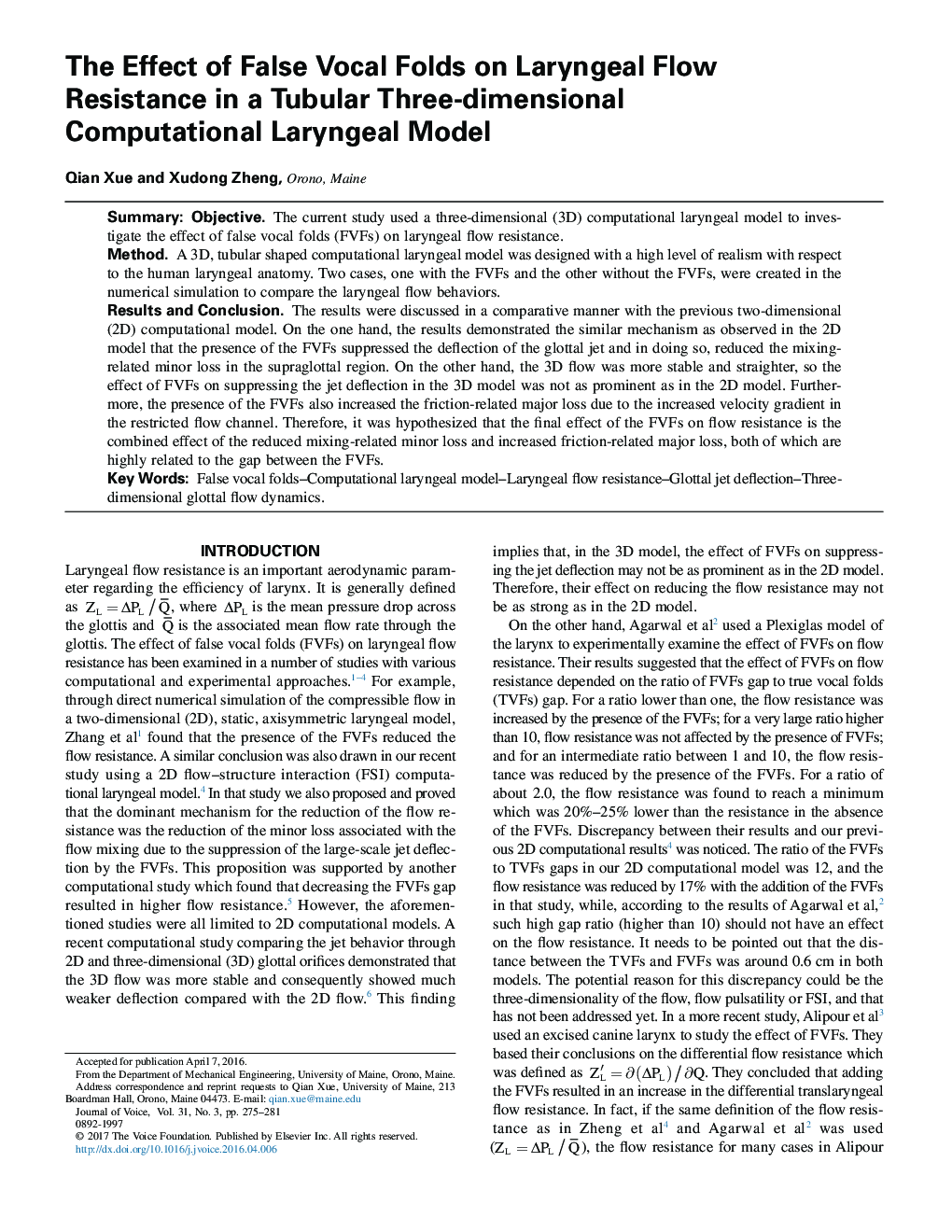| کد مقاله | کد نشریه | سال انتشار | مقاله انگلیسی | نسخه تمام متن |
|---|---|---|---|---|
| 5124228 | 1378441 | 2017 | 7 صفحه PDF | دانلود رایگان |
SummaryObjectiveThe current study used a three-dimensional (3D) computational laryngeal model to investigate the effect of false vocal folds (FVFs) on laryngeal flow resistance.MethodA 3D, tubular shaped computational laryngeal model was designed with a high level of realism with respect to the human laryngeal anatomy. Two cases, one with the FVFs and the other without the FVFs, were created in the numerical simulation to compare the laryngeal flow behaviors.Results and ConclusionThe results were discussed in a comparative manner with the previous two-dimensional (2D) computational model. On the one hand, the results demonstrated the similar mechanism as observed in the 2D model that the presence of the FVFs suppressed the deflection of the glottal jet and in doing so, reduced the mixing-related minor loss in the supraglottal region. On the other hand, the 3D flow was more stable and straighter, so the effect of FVFs on suppressing the jet deflection in the 3D model was not as prominent as in the 2D model. Furthermore, the presence of the FVFs also increased the friction-related major loss due to the increased velocity gradient in the restricted flow channel. Therefore, it was hypothesized that the final effect of the FVFs on flow resistance is the combined effect of the reduced mixing-related minor loss and increased friction-related major loss, both of which are highly related to the gap between the FVFs.
Journal: Journal of Voice - Volume 31, Issue 3, May 2017, Pages 275-281
